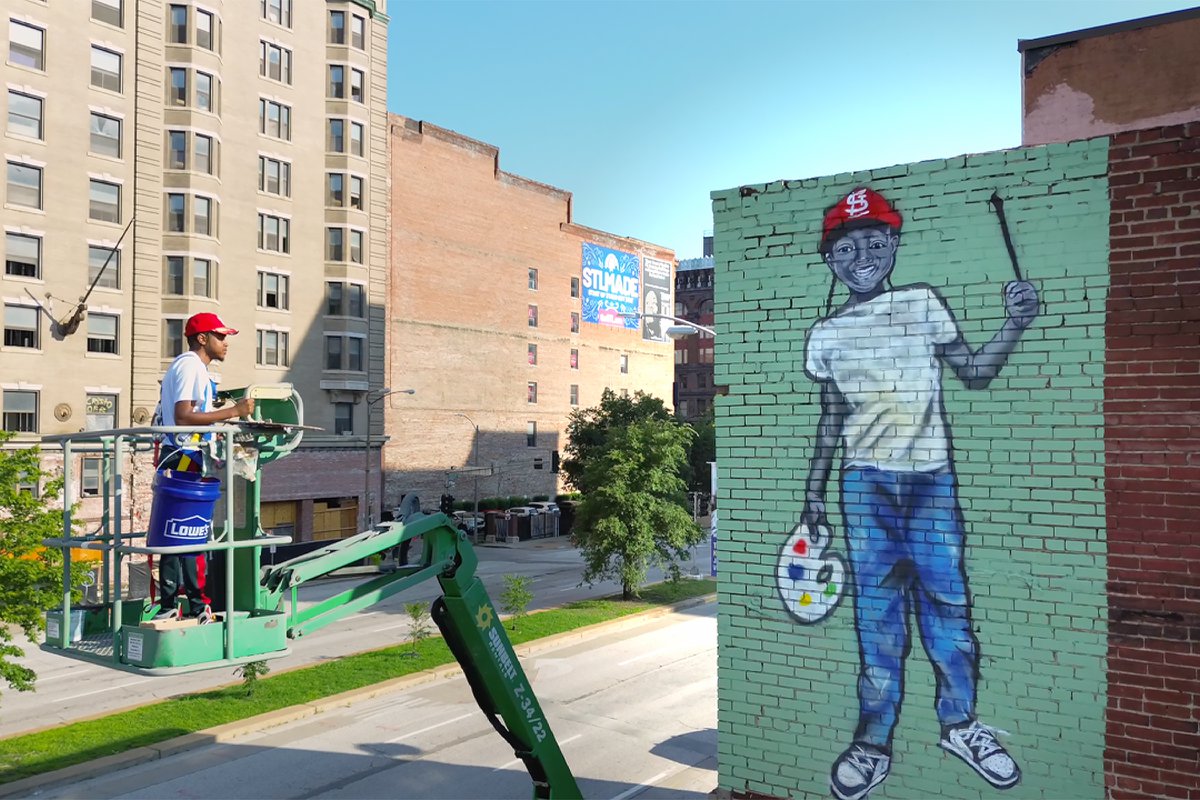
St. Louis is a city brimming with artistic talent, cultural richness, and creative innovation, and much of that vibrancy is thanks to the efforts of the Regional Arts Commission of St. Louis (RACSTL).
For four decades, RACSTL has shaped the city’s cultural landscape, making St. Louis a national hub for the arts while driving economic development, creating jobs, and enhancing tourism. In 2024 alone, RACSTL awarded more than $9.69 million in grants to the arts and culture sector.
Simply put, without RACSTL, this community would look very different.
Building St. Louis’ Cultural Legacy
Since its founding in 1985, RACSTL has worked to uplift the arts and enrich lives across the city. From supporting world-class institutions like the St. Louis Symphony Orchestra and The Black Rep to fostering grassroots projects and emerging artists, RACSTL has consistently championed creativity and community.
The St. Louis Shakespeare Festival is just one of many examples that illustrates the impact of the nonprofit. Its free shows and locally created original music productions, supported in part by RACSTL grants, have made high-quality arts accessible to everyone in the region.
“Since the earliest days of the Shakespeare Festival 25 years ago, RACSTL has been a part of the success. Now, Shakespeare Glen in Forest Park is one of the largest outdoor theaters for Shakespeare anywhere in the world,” says Tom Ridgely, producing artistic director for St. Louis Shakespeare Festival. “And it’s foundational support like the RACSTL grants that allow us to focus on what really matters: bringing more exceptional, high-quality free theater to our region and its visitors.”
Similarly, iconic institutions such as The Muny and The Repertory Theatre have thrived with RACSTL’s help, showcasing the city’s commitment to cultural excellence. “A lot of people aren’t aware just how much we touch. From theater and dance to murals and festivals, there are so many ways RACSTL has shaped this city,” says RACSTL senior communications manager Jay Scherder.
Economic and Tourism Impacts in St. Louis
RACSTL is funded primarily through hotel and motel taxes—which means tourism created by arts and culture funds even more opportunities for RACSTL to make an impact. By driving tourism and attracting visitors to the city’s art events, RACSTL also significantly contributes to St Louis’ economy.
In 2023, RACSTL launched StLouisArts.org, a tourism-centered website that saw 1.5 million users in its first year, a meteoric rise from 124,000 during the previous year. This increased visibility is a testament to the organization’s commitment to positioning St. Louis as a premier arts destination.
“More people visiting means more funds for the community,” Scherder says. “That’s why we work so closely with organizations like Explore St. Louis to promote the arts as a key driver of tourism. We’re not just about grants; we’re about building relationships that uplift the entire region.”
The pandemic posed one of the greatest challenges in RACSTL’s history, as the organization lost the majority of its funding almost overnight. Grants were halted, and the city’s cultural scene was left reeling. RACSTL rebounded, however, nearly reaching pre-pandemic funding levels while tackling an ever-growing need. Thanks to American Rescue Plan Act funding, RACSTL was able to allocate $10.6 million in funding to tourism-related projects, including 28 new murals and significant contributions to major institutions. These investments, which also included an additional $500,000 to The Muny and $300,000 to the St. Louis Symphony, are more than just aesthetic enhancements—they’re generational catalysts for economic and cultural growth.
Looking Ahead: A 40-Year Milestone for RACSTL
As RACSTL approaches its 40th anniversary, in 2025, the organization remains focused on its mission to fund and uplift artists and arts organizations. Plans for a citywide celebration in August promise to highlight the immense impact that RACSTL has had over the years. Beyond the festivities, the organization is leaning into cross-sector collaboration, inspired by successful models in cities such as Detroit and Pittsburgh.
“Our goal is to act as a catalyst for progress,” Scherder says. “By fostering partnerships and encouraging collaboration, we’re ensuring the arts continue to thrive in St. Louis.”
From supporting local artists to driving tourism, RACSTL has proven that the arts are not just an integral part of St. Louis’ identity; they’re an economic engine and a unifying force. As the organization enters its fifth decade, its commitment to creativity and community remains stronger than ever.
Without RACSTL, St. Louis would be a very different place. Thankfully, with its continued leadership and vision, the city’s cultural heartbeat will only grow stronger in the years to come.
This post was created by SLM Partner Studio on behalf of Regional Arts Commission of St. Louis. To learn more, visit racstl.org.
